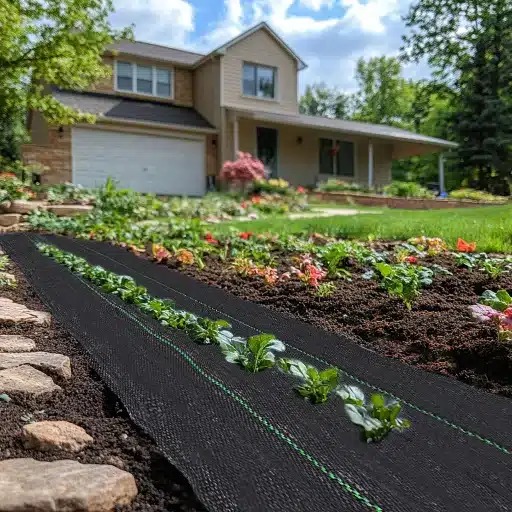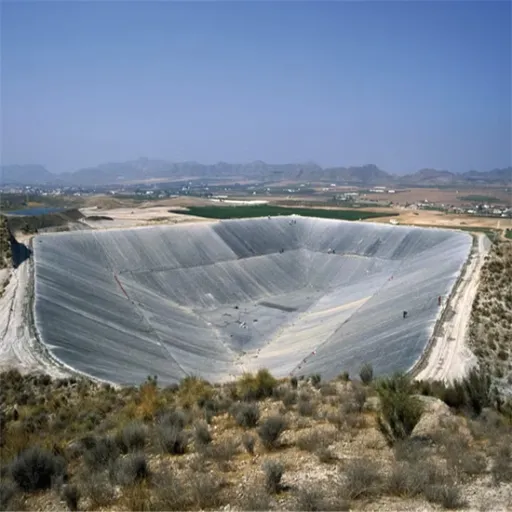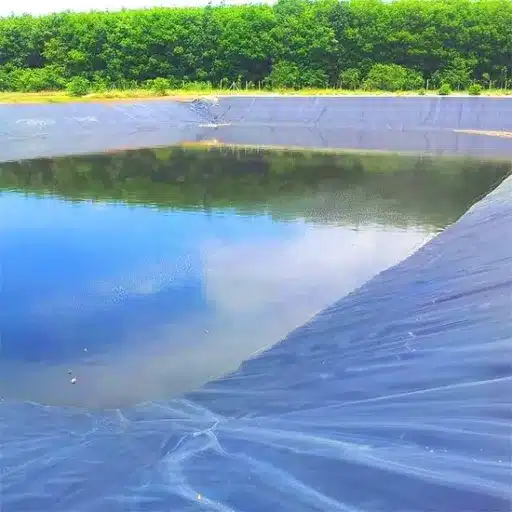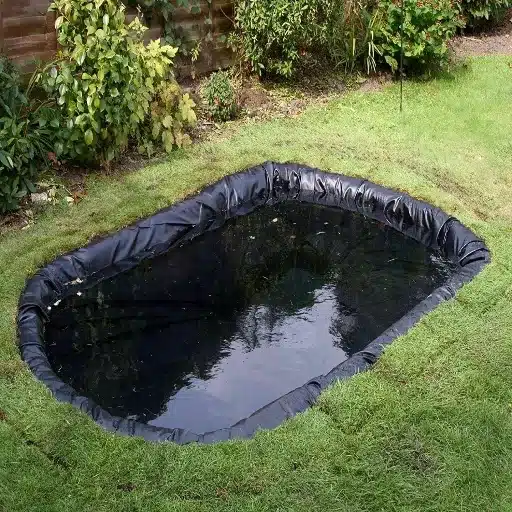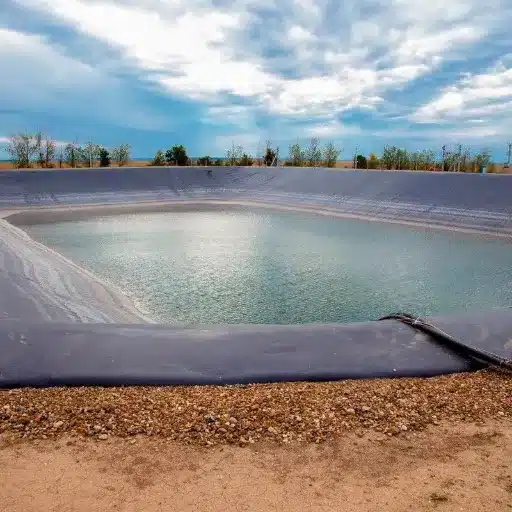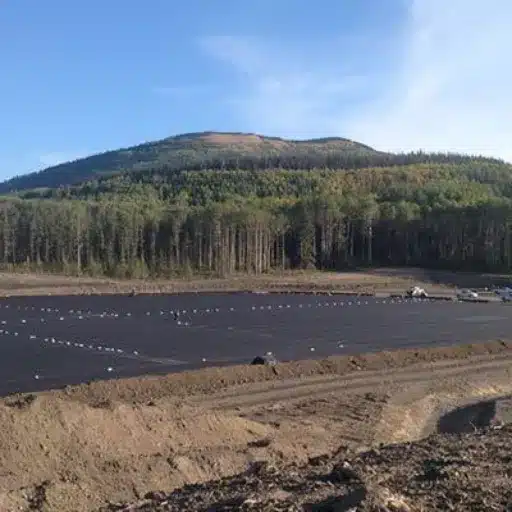When it comes to maintaining a clean, weed-free lawn or garden, the proper tools can make all the difference. High-quality landscape fabric is one of the most effective products to fight unwanted weeds. Weed barrier landscape fabric suppresses weed growth while allowing moisture and nutrients to enter your plants, and any efficient or long-term gardener or landscaper has got to have this product. So how do you select one that fits exactly your needs among all options present on the market? This article will discuss the top weed barrier landscape fabrics presently in the market, will bring highlights of features, pros & cons, and possibly how they can improve the attractiveness of your outdoor spaces. The guide will make you amazingly able to choose a weed barrier whether trying to tame a wild garden or going into a blank canvas with a new project for a beautiful and easy-to-care-for landscape.
Understanding Weed Barriers
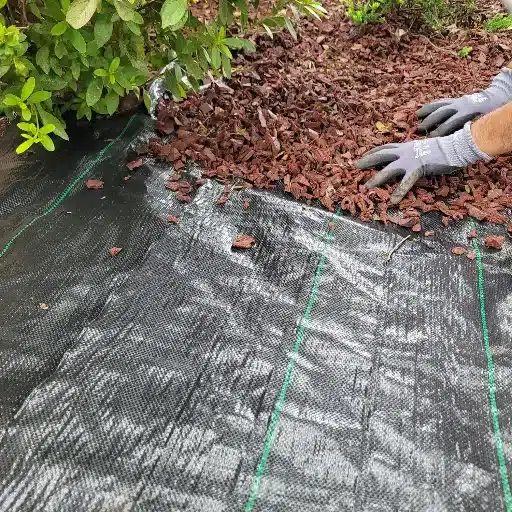
When choosing the right weed barrier landscape fabric, my considerations target certain specific requirements. Does the material possess erosion resistance, permeability, and UV resistance? These factors tell whether the weed barrier will prevent weeds from germinating and allow water and nutrients to pass into the soil. Size is an important consideration because the fabric must adhere to the specifications of either a garden bed or a large area. Lastly, price is matched against quality to make a prudent, long-lived investment.
What Is a Weed Barrier?
A weed barrier is a landscaping material aimed at keeping unwanted weeds from germinating in flower gardens, flower beds, and other outdoor places. Usually, they keep weeds that are trying to sprout from getting any sunlight and compete with your plants for nutrients, water, and sunlight, creating a barrier made of woven fabric, plastic, or biodegradable materials.
With weed barriers imparting a great deal of lower maintenance landscapes, the idea of weed control is eye-catching. An effective weed barrier usually carries UV protection to lessen degradation from sunlight and carries micro-perforations that allow air and water to filter to the soil beneath. According to a recent study, weed growth can be cut by almost 90% through the use of landscape fabric as compared with untreated surfaces, thus saving time and energy in tending to plants.
There are various types of weed barriers ranging from heavy woven polypropylene fabric for demanding applications to biodegradable variants for the environmentally friendly gardener. When choosing a weed barrier, one must consider durability, permeability, and formulation with the gardening goal in mind.
Importance of Weed Control in Landscaping
Weed control is vital for maintaining healthy and aesthetically pleasing landscapes. Weeds compete with desired plants for water, nutrients, sunlight, and space, thereby stunting the growth or even causing the death of ornamentals and crops. According to recent investigations, weeds can reduce crop yields by up to 34% across the globe, thus representing a huge influence on agricultural productivity as well as garden efficiency. Also, the growth of weed unchecked can provide shelter for pests and diseases, thereby endangering the relative well-being of landscapes.
Good weed control not only improves the appearance of lawns and gardens but also maintains ecological equilibrium. Preventative means include the use of strong weed barriers or mulches that help prevent weed infestation by limiting weed penetration of light front-end seed germination. Also, remove manually or with herbicides in time so as not to go rampant those species that would ensure that a vibrant and green luggage lying before it. By trying to get as far as possible at the problem and using varied physical, chemical, and organic means, gardeners and landscapers alike will protect their greens and increase the functionality and durability of their outdoor space.
Top Features to Consider
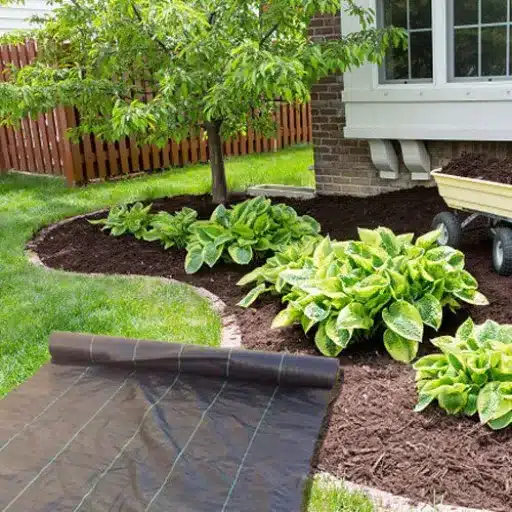
In tackling weed infestations, my emphasis lies on preventing the penetration of sunlight and the germination of seeds through the proper implementation of ground cover methods. I also stress timely manual removal and, where required, the prudent use of selective herbicides to control invasive species efficiently. Using all combinations of physical, chemical, and organic-type methods ensures that the landscapes remain healthy, functional, and pleasing to the eye.
Material Composition of Weed Barrier Fabric
It would be to the client’s advantage to select a weed barrier fabric based on the material composition, thus enabling an informed choice. Weed barrier fabrics are made from woven polypropylene, non-woven polypropylene, or biodegradable material, all of which differ in character and usefulness.
Woven Polypropylene
Woven polypropylene is a high-strength fabric for which the plastic strips are woven so tightly that a good strength exists. The fabric has a high resistance to UV rays, weathering, and tearing; for this reason, it can be used for a very long term, especially in high-traffic and exposed areas. Studies reveal that a woven polypropylene barrier blocks more than 90% of sunlight and can keep weeds growing, while water and air are still able to penetrate.
Non-Woven Polypropylene
Non-woven Polypropylene is manufactured by bonding techniques such heat-pressing or gluing and produces a fabric with a solid yet flexible texture. This type generally offers higher permeability for air and water, thereby maintaining soil health while minimizing weed growth. These non-woven fabrics find applications in garden beds and in places where replanting occurs frequently, and they are often preferred because they degrade less as compared to natural materials.
Biodegradable Fabrics
For environmentally friendly projects, biodegradable materials such as coconut coir, jute, or treated paper serve as good alternatives. Such materials break down gradually into the soil while still offering temporary weed suppression. Industry insiders have noted that biodegradable options have risen in popularity due to their reduced impact on the environment but generally require replacement more frequently compared to synthetics.
Durability and Longevity
An important concern before weed barrier fabrics is durability and longevity, which should be foremost in mind when trying to gauge the overall effectiveness one expects from the landscaping project. Synthetics like those of polypropylene or polyester are reputed for their superior resistance to tearing and, therefore, being something that can withstand for a long period. The life expectancy ranges between 5 and 10 years, subject to sunlight-UV rays exposure and environment conditions. UV-treated fabrics add to sunscreens as the synthetic fabric and provide a better health to fabric longevity.
On the other hand, natural ones such as burlap and biodegradable mats are environmentally friendly but with a very short lifespan, usually ranging from 6 months to 2 years. This may be a trade-off that the gardener pays for being environmentally friendly but is a loss in terms of frequent replacements.
Research Insight: Generally, in terms of durability, woven weed barrier fabrics stand much better than non-woven ones. Woven articles of manufacture offer much stronger tensile strength and are best used under heavy mulch or in areas subjected to traffic. Data from recent literature point out that woven polypropylene barriers maintain their full potential for at least 8 years even in areas with high UV exposure, whereas non-woven barriers start to lose their effectiveness markedly after 3 to 5 years under the same conditions.
Installation Tips for Weed Barrier Fabric
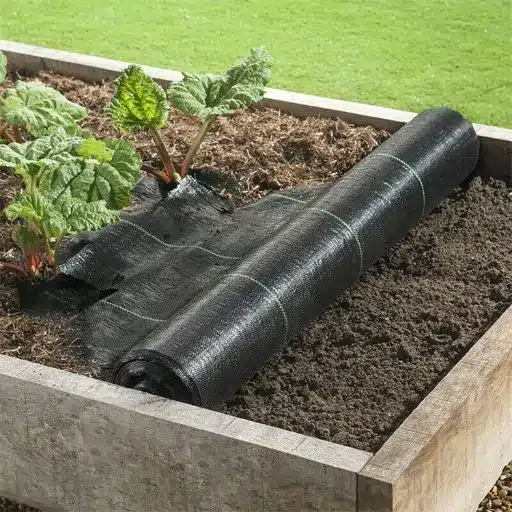
When selecting the weed barrier fabric, choose based on the environmental conditions to which the product will be exposed and the life expectancy needed for the project. Woven polypropylene should be used where UV exposure is high, since it can last about 8 years; non-woven may not withstand such exposure and, therefore, might degrade faster, usually lasting 3 to 5 years.
Preparing the Landscape Area
Preparing the area proper is one of the key considerations during installation for the weed barrier fabric to work well. Do the following steps to get the best results:
1. Clear the Area
First, remove any existing vegetation, debris, or rocks in the area where you are going to put down the weed barrier fabric. You may use a garden rake or hoe to uproot any weeds from the ground surface and make sure it is clear. A landscaping expert concludes that removal of 90-100% of weeds before laying the fabric reduces the chances of regrowth.
2. Level the Ground
Level the ground by using a shovel or rake to remove any uneven surfaces that may cause the fabric to tear or shift. For areas of heavy compaction, aerate the soil to improve permeability to water and air.
3. Add Soil Amendments (Optional)
If the soil in the landscape area is depleted of nutrients, incorporate soil amendments such as compost or organic matter at this stage. Studies suggest mixing in 2-4 inches of compost to improve soil structure and plant root penetration. Mix the compost really well before blending it with the existing soil.
Proper Way of Laying Down the Fabric
Correctly laying down weed barrier fabric greatly maximizes its ability to prevent unwanted growth. Carry out the following steps in ensuring a sound installation:
- Measure and Cut the Fabric: Start with measuring the area where the fabric is to be laid. Use a complete roll of weed barrier fabric and cut it according to the specific dimensions of your landscape project. Always allow for a few extra inches on each side, in case some adjustments need to be made or for the oversight of an overlap. Acts of binding weeds by overlapping their fabric at the edges from 2 to 6 inches can be helpful.
- Position the Fabric: Fabric needs to be set flat atop the prepared soil surface with the coarse side down. Keeping the coarse side down will increase adhesion to the soil and will keep it from moving, and the smooth side should face up to repel water better. Do not let gaps or folds form in the material; they will lead to weak spots being exploited by weeds.
- Secure the Fabric: Anchor fabric with landscape staples or garden pins. Insert staples every 12-18 inches along the edges of the fabric and in the center. For areas that receive heavier winds or foot traffic, put in the staples every 6-8 inches for extra support. Studies show that securing is proven to drastically reduce fabric shift over time.
- Cut Planting Holes: In cases where plants will be introduced into the treated zone, cut small x-shaped openings in the fabric using a sharp utility knife. Fold the flaps under to leave a neat hole for planting while maintaining the rest of the fabric intact. This way, the barrier will continue to work against weeds while allowing plenty of room for the planted greenery.
Maintenance of Weed Barriers
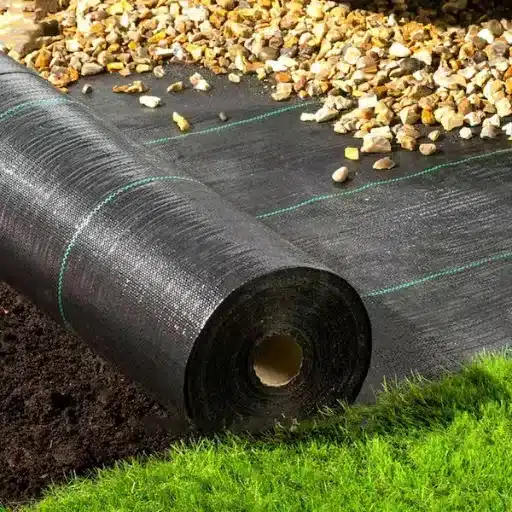
To maintain a weed barrier, I ensure that it remains firmly anchored and inspect it from time to time, looking for any damage or displacement. Should I observe any tears in the fabric or shifting, I immediately repair or readjust it to keep it working effectively. I also keep an eye on any weeds that start growing through the planting holes or from the edges so that I can nip the problem in the bud.
Monthly Checks and Repairs
For keeping your weed barrier working at optimal levels, regular checks and appropriate repairs are necessary. Over time, elements such as heavy rainfall, strong winds, or foot traffic can shuttle the fabric around or wear it down in some places. A simple monthly check of loose edges, torn sections, or gaps will make sure you caught them all before weeds start coming through.
Expert Tip: Current recommendations suggest that you should fix small fabric tears immediately with a patch or by stapling down any loose edges to considerably extend its lifespan. Studies further show that replenishing the mulch where it thins every 6 to 12 months assures steady coverage and moisture retention for your plants. Applying a 2 to 3-inch layer of the best mulch in your possession would kill weed growth from the very first stages by preventing sunlight from shining down on weed seeds.
When to Replace Your Weed Barrier
Keeping up good knowledge of when to replace your weed barrier will go a long way to ensure that it continues to suppress the weeds effectively while at the same time being a nice environmental chamber for supporting the health of your garden. On the average, most weed barriers would last for about 5 to 10 years, depending on the quality of material with which it was made, the amount of exposure to the elements, and level of foot or equipment traffic. Over time, due to ultraviolet ray exposure, the materials may tear or carry debris that will reduce weed suppression and allow the growth of some undesirable plants.
If you notice some visible tears, excessive weeds breaking through materials, or loss of coverage, it will most certainly be time for replacing the weed barrier. There is a newer generation of landscape fabrics that is more durable, UV-resistant, and water-permeable in the meantime if you want to upgrade the barrier for your garden. Actually, recent industry data shows that installing high-grade premium weed barriers can reduce weed growth by as much as 90%, effectively saving time and the cost of maintenance in the long haul.
Reference Sources
-
Target’s Weed Barrier Landscape Fabric Section
Target’s website offers a variety of weed barrier fabrics, showcasing different materials and sizes. This source provides insights into the types of products available and their effectiveness for landscaping needs. -
Garden Mats – A Weed Barrier That Works
Garden Mats highlights the benefits of high-quality woven polypropylene fabric for weed control. It discusses the durability and sunlight management features, making it a credible source for understanding product feasibility. -
Best Landscaping Fabrics on Target
Target’s Landscaping Fabrics Section lists premium weed barriers and ground covers. It includes details on materials like polyester and woven polypropylene, which are essential for effective weed control.
Frequently Asked Questions (FAQs)
The best weed barrier fabric for your garden really depends on what you want it for. Heavy-duty weed barrier fabrics are excellent gracing large areas of the garden with weed growth, while woven landscape fabric is best if water and nutrients are to be permeated through them. Non-woven geotextile fleece is another good option if it must wear and tear so well in keeping weeds at bay.
Weed control fabrics are great certainty if they are installed correctly to stop weeds from growing. They allow water, air, and nutrients to pass through while the fabrics solarize the weeds that would otherwise have germinated under them. A thin mulch layer on top of the fabric should provide additional protection from the weeds.
A tarp, for sure, will block sunlight and prevent weed growth—though it is not a very good long-term solution like a heavy-duty weed barrier landscape fabric. A tarp will trap moisture and might cause mold and rot, while proper weed barriers are designed to drain water and keep weeds underneath from growing.
For driveway applications, use a heavy-duty weed barrier fabric that is specifically designed for that purpose. A driveway landscape fabric needs to withstand vehicle traffic and keep weeds from coming out through the gravel or other materials used for the driveway.
Firstly prepare the garden area by clearing away any pre-existing weeds or debris. Lay the fabric flat across the area, folding over any overlapping edges. Fix it down with garden staples and finish with the application of either mulch or gravel as a further deterrent against weeds.
Gardening weed barrier is highly advantageous for vegetable gardens. It will stop weed growth and allow your vegetables to grow alongside without any competition for nutrients and water. Giving a good application of premium heavy-duty weed barrier surely will increase weed protection and guarantee your plants the best care.

